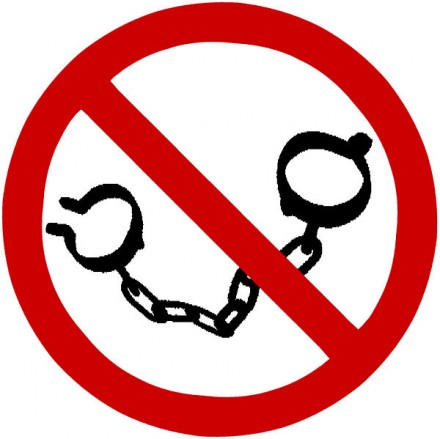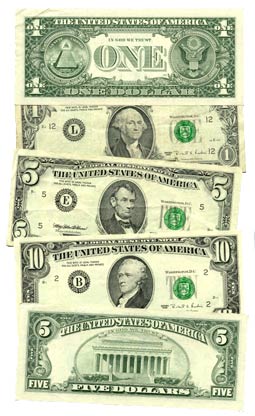 Why are Greece, Spain, Italy, Portugal and so many other countries experiencing depression-like conditions right now? It is because they have too much debt. Why do they have too much debt? It is because they allowed themselves to become enslaved to the bankers. Borrowing money from the bankers can allow a nation to have a higher standard of living in the short-term, but it always results in a lower standard of living in the long-term. Why is that? It is because you always have to pay back more money than you borrowed. And when you get to the point of having a debt to GDP ratio in excess of 100%, you are basically drowning in debt. Huge amounts of money that could be going to providing essential services and stimulating your economy are now going to service your horrific debt. Today, citizens in Greece, Spain, Portugal and Italy are experiencing a standard of living far below what they should be because the bankers have trapped them in endless debt spirals. Sadly, the vast majority of the people living in those countries have absolutely no idea what is at the root cause of their problems.
Why are Greece, Spain, Italy, Portugal and so many other countries experiencing depression-like conditions right now? It is because they have too much debt. Why do they have too much debt? It is because they allowed themselves to become enslaved to the bankers. Borrowing money from the bankers can allow a nation to have a higher standard of living in the short-term, but it always results in a lower standard of living in the long-term. Why is that? It is because you always have to pay back more money than you borrowed. And when you get to the point of having a debt to GDP ratio in excess of 100%, you are basically drowning in debt. Huge amounts of money that could be going to providing essential services and stimulating your economy are now going to service your horrific debt. Today, citizens in Greece, Spain, Portugal and Italy are experiencing a standard of living far below what they should be because the bankers have trapped them in endless debt spirals. Sadly, the vast majority of the people living in those countries have absolutely no idea what is at the root cause of their problems.
The truth is that no sovereign nation on earth ever has to borrow a single penny from anyone.
In theory, there is nothing stopping a government from printing up debt-free money and spending it into circulation.
But that is not the way our world works.
Instead, our national governments borrow money that has been zapped into existence out of thin air by central banks.
Now what kind of sense does that make?
Why don’t our governments just create the money themselves?
If the government of Greece had been directly issuing debt-free Greek currency all these years, they would have a national debt of zero and they would not be in the middle of a deep depression today.
So why isn’t anyone proposing that they go to such a system?
Instead, everyone is trying to figure out a way that the Greeks can muddle through this depression and keep paying on their unsustainable debts.
It is such a tragedy what has happened to Greece. The city of Boston has a larger economy than the entire nation of Greece at this point.
But this is what happens when you allow the bankers to trap your country in debt. The central banking systems of the world are designed to be endless debt spirals that systematically transfer wealth from the people through the governments and into the hands of the ultra-wealthy.
Just look at what is happening in the United States. The U.S. national debt is now more than 5000 times larger than it was when the Federal Reserve was first created.
Greece, Spain, Italy, Portugal and the rest of the nations of the western world did not get into all this debt by accident.
This happened by design.
And we can see what happens when the system starts to unravel by looking at what is happening in Greece and in Spain right now.
The following are 11 things that can happen when you allow your country to become enslaved to the bankers….
#1 At some point nations that are drowning in debt must implement “austerity measures” in an attempt to stay solvent.
This causes economic slowdown and unemployment skyrockets. We are seeing this happen in Greece, Spain and a whole bunch of other nations right now.
Over the past four years, the Greek economy has contracted by close to 25 percent. Just this week it was announced that the unemployment rate in Greece has risen to 23.1 percent.
A year ago it was just 16.8 percent
In Spain, the unemployment rate is even higher. It has hit 24.6 percent, and some analysts expect it to eventually reach 30 percent.
This would have never happened if these nations had not gotten into so much debt.
#2 Economic progress can actually go backwards in a debt-based system.
In Greece, a very large number of citizens have actually been giving up their cars and have gone back to riding bikes….
The high cost of road tax, fuel and repairs is forcing Greeks to ditch their cars in huge numbers. According to the government’s statistics office, the number of cars on Greek roads declined by more than 40 percent in each of the last two years. Meanwhile, more than 200,000 bikes were sold in 2011, up about a quarter from the previous year.
#3 Your banking system will inevitably melt down at some point.
Every debt bubble eventually bursts, and authorities all over Europe are desperately trying to keep the European banking system from completely imploding.
But despite their efforts, people are pulling money out of banks in southern Europe at a staggering pace. Just check out the slow motion bank run that is unfolding in Spain….
Capital outflows from Spain more than quadrupled in May to €41.3 billion ($50.7 billion) compared with May 2011, according to figures released on Tuesday by the Spanish central bank.
In the first five months of 2012, a total of €163 billion left the country, the figures indicate. During the same period a year earlier, Spain recorded a net inflow of €14.6 billion.
#4 In all countries with a debt-based system, eventually your taxes will be raised to ridiculous levels.
When the income tax was introduced in the United States back in 1913, the vast majority of Americans were in the 1 percent tax bracket.
Throughout the years there have been countless promises that taxes would be limited, but those promises always end up getting broken.
Even when they give us “tax cuts” with one hand, they usually end up raising taxes ten different ways with the other hand.
In the United States today, we are literally taxed in dozens and dozens of different ways.
Our politicians love to come up with new and inventive ways to tax us without us really even feeling it.
In the end, they are going to take as much away from us as they can possibly get away with.
Just look at what is happening in France.
The newly elected socialist president of France says that his party plans to raise the top tax rate in France to 75 percent.
But even though our politicians tax us to death, they still manage to run up gigantic mountains of debt on top of that.
#5 Your currency slowly but steadily becomes worthless.
Most people don’t realize that inflation is a tax. Every dollar you currently have in the bank is constantly losing value. That is because in a debt-based system like we have, the total amount of money and the total amount of debt is supposed to keep perpetually expanding.
Since the Federal Reserve was created, the U.S. dollar has declined in value by well over 95 percent.
This did not happen by accident. Every other major currency around the globe has been steadily declining in value as well.
#6 When things get bad enough, there will be rioting in the streets.
A few weeks ago, a total of more than a million public employees took to the streets in more than 80 different Spanish cities. You can view footage of some of the violent clashes with police that took place right here.
#7 When a debt-based economy crashes, money becomes very tight and shortages tend to happen.
Just look at what is happening in Greece. Medicine shortages have become a tremendous problem. The following is from a recent Bloomberg article….
Mina Mavrou, who runs a pharmacy in a middle-class Athens suburb, spends hours each day pleading with drugmakers, wholesalers and colleagues to hunt down medicines for clients. Life-saving drugs such as Sanofi (SAN)’s blood-thinner Clexane and GlaxoSmithKline Plc (GSK)’s asthma inhaler Flixotide often appear as lines of crimson data on pharmacists’ computer screens, meaning the products aren’t in stock or that pharmacists can’t order as many units as they need.
“When we see red, we want to cry,” Mavrou said. “The situation is worsening day by day.”
The 12,000 pharmacies that dot almost every street corner in Greek cities are the damaged capillaries of a complex system for getting treatment to patients. The Panhellenic Association of Pharmacists reports shortages of almost half the country’s 500 most-used medicines.
#8 Your population will eventually become so desperate that they will start banding together to loot food and supplies from stores.
When people have no work and they cannot feed their families they often find themselves doing things that they never imagined that they would do. Just check out what is happening in Spain right now….
Unemployed fieldworkers and other members of the union went to two supermarkets, one in Ecija (Sevilla) and one in Arcos de la Frontera (Cadiz) and loaded up trolleys with basic necessities. They said that the people were being expropriated and they planned to “expropriate the expropriators”.
The foodstuffs, including milk, sugar, chickpeas, pasta and rice, have been given to charities to distribute, who say they are unable to cope with all the requests for help they receive. Unemployment in the Sierra de Cadiz is now 40%.
#9 If things get bad enough, even essential services may start shutting down.
Authorities in Greece are legitimately concerned that there may be interruptions in the supply of natural gas and electricity. Suppliers are leaving bills unpaid for extended periods of time, and one day millions of Greeks may wake up to find that the power to their homes has been cut off….
Greece’s power regulator RAE told Reuters on Friday it was calling an emergency meeting next week to avert a collapse of the debt-stricken country’s electricity and natural gas system.
“RAE is taking crisis initiatives throughout next week to avert the collapse of the natural gas and electricity system,” the regulator’s chief Nikos Vasilakos told Reuters.
RAE took the decision after receiving a letter from Greece’s natural gas company DEPA, which threatened to cut supplies to electricity producers if they failed to settle their arrears with the company.
#10 In an economic depression, many people begin to totally lose hope.
An increasing number of parents in southern Europe are facing such desperate situations that they are actually abandoning their babies.
The following is from a recent CNBC article….
According to SOS Villages, a European charity that attempts to help families in financial hardship before abandonment occurs, in the last year alone 1,200 children in Greece and 750 in Italy have been abandoned. That is almost double the 400 children abandoned in Italy a year ago, and up from 114 children abandoned in Greece in 2003.
#11 Just like we saw during the Great Depression of the 1930s, there is a spike in suicides when an economy crashes.
Greece has never seen anything like what is happening now. The suicide rate has been absolutely soaring.
The following is from a Reuters article back in April….
On Monday, a 38-year-old geology lecturer hanged himself from a lamp post in Athens and on the same day a 35-year-old priest jumped to his death off his balcony in northern Greece. On Wednesday, a 23-year-old student shot himself in the head.
In a country that has had one of the lowest suicide rates in the world, a surge in the number of suicides in the wake of an economic crisis has shocked and gripped the Mediterranean nation – and its media – before a May 6 election.
If you live in the United States, you need to watch what is happening in Europe very closely, because similar conditions will come to the United States soon enough.
Just like Europe, we have allowed ourselves to become enslaved to the bankers, and now we will suffer the consequences.
Sadly, most Americans do not even realize how we got into this mess. The following is from a recent article by Professor Steven Yates….
It should have been clear that the country—indeed, Western civilization itself—was on the wrong trajectory as governments and central banks, working in tandem, severed ties between their currencies and precious metals, allowing massive credit expansion to run rampant and the national debt to skyrocket—making, e.g., the pseudo-prosperity of the roaring 1990s possible. Nixon had “closed the gold window” on August 15, 1971; our national debt was around $400 billion. Slightly over ten years later, the debt crossed the $1 trillion threshold. Ten years after that, it reached $6 trillion. When George W. Bush left office having been the biggest spending Republican in U.S. history, it had risen to over $11 trillion. Today, under the watch of the catastrophic Obama presidency, by the time this reaches print the national debt might have surmounted $16 trillion with no end in sight.
The United States has accumulated the greatest mountain of debt in the history of the world and it will totally crush us at some point.
Unfortunately, the vast majority of Americans are living paycheck to paycheck and are totally unprepared for the economic chaos that is coming.
One study found that 64 percent of all Americans have less than $1000 in the bank.
Can you believe that?
Even though we could be on the verge of another global food crisis, most Americans do not have enough food in their homes to last a single month.
Even though the U.S. economy is on the verge of another recession, most Americans are still running out and buying toys that they don’t need and paying for them with credit cards that they should not be using.
If you want to see where we are headed, just look at Greece and Spain.
They are going through economic hell, and we will be joining them soon enough.
Get ready while you can.








